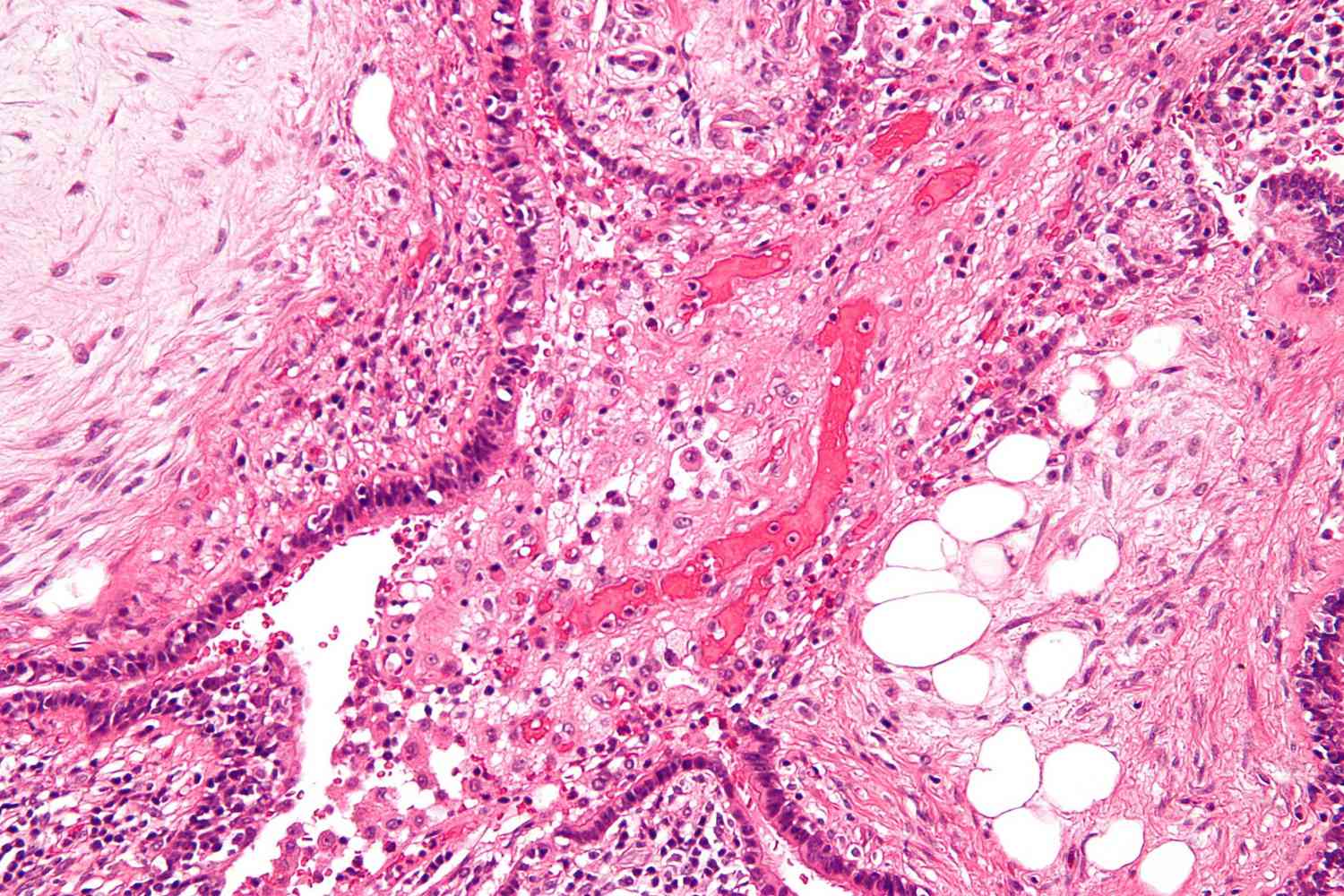
What is a hamartoma? A hamartoma is a benign (non-cancerous) growth made up of an abnormal mixture of cells and tissues found in the area of the body where the growth occurs. These growths can appear in various organs, including the lungs, liver, kidneys, and even the brain. Unlike cancerous tumors, hamartomas grow at the same rate as the surrounding tissues and do not spread to other parts of the body. They are often discovered incidentally during imaging tests for other conditions. While generally harmless, some hamartomas may require monitoring or removal if they cause symptoms or complications. Understanding these unique growths can help in managing health more effectively.
What is a Hamartoma?
A hamartoma is a benign (non-cancerous) tumor-like growth made up of an abnormal mixture of cells and tissues. These growths can occur in various parts of the body and are often discovered incidentally during imaging tests for other conditions.
- Hamartomas are composed of tissues that are normally found in the affected area, but they grow in a disorganized manner.
- They can develop in various organs, including the lungs, liver, kidneys, and skin.
- The term "hamartoma" comes from the Greek word "hamartia," meaning "fault" or "defect."
Types of Hamartomas
Hamartomas can vary greatly depending on their location and the types of tissues involved. Here are some common types:
- Pulmonary hamartomas are the most common type found in the lungs.
- Hypothalamic hamartomas occur in the brain, specifically in the hypothalamus.
- Cardiac hamartomas develop in the heart and are rare.
- Renal hamartomas are found in the kidneys and are often associated with tuberous sclerosis.
- Cutaneous hamartomas appear on the skin and can include conditions like nevus sebaceous.
Symptoms and Diagnosis
Symptoms of hamartomas can vary widely depending on their location and size. Diagnosis often involves imaging studies and sometimes biopsy.
- Pulmonary hamartomas are often asymptomatic but can cause cough or chest pain if large.
- Hypothalamic hamartomas can cause seizures, hormonal imbalances, and developmental delays.
- Cardiac hamartomas may lead to arrhythmias or heart failure.
- Renal hamartomas can cause abdominal pain or hematuria (blood in urine).
- Cutaneous hamartomas are usually visible as lumps or skin lesions.
Causes and Risk Factors
The exact cause of hamartomas is not well understood, but several factors may contribute to their development.
- Genetic mutations are believed to play a role in some cases.
- Certain genetic syndromes, such as tuberous sclerosis and Cowden syndrome, increase the risk of developing hamartomas.
- Most hamartomas are sporadic, meaning they occur randomly without a known cause.
Treatment Options
Treatment for hamartomas depends on their size, location, and symptoms. Many hamartomas do not require treatment and are simply monitored.
- Surgical removal is an option if the hamartoma causes symptoms or complications.
- Medications may be used to manage symptoms, especially for hypothalamic hamartomas.
- Regular monitoring with imaging studies is often recommended for asymptomatic hamartomas.
- In some cases, minimally invasive procedures like radiofrequency ablation can be used to treat hamartomas.
Interesting Facts
Hamartomas, despite being benign, can sometimes mimic more serious conditions, leading to interesting medical cases and discoveries.
- Pulmonary hamartomas are the most common benign lung tumors, accounting for about 75% of all benign lung masses.
- Hypothalamic hamartomas are a rare cause of gelastic seizures, which are characterized by bouts of uncontrollable laughter.
- Cardiac hamartomas are extremely rare, with only a few hundred cases reported in medical literature.
- Renal hamartomas are often associated with angiomyolipomas, which are benign kidney tumors composed of blood vessels, muscle, and fat.
- Cutaneous hamartomas can sometimes be mistaken for malignant skin tumors, leading to unnecessary treatments.
Research and Future Directions
Ongoing research aims to better understand hamartomas and improve treatment options.
- Genetic studies are exploring the mutations involved in hamartoma development.
- New imaging techniques are being developed to better differentiate hamartomas from malignant tumors.
- Advances in minimally invasive surgery are making it easier to remove hamartomas with fewer complications.
- Research into targeted therapies is ongoing, particularly for hamartomas associated with genetic syndromes.
- Patient registries and databases are being created to collect information on hamartoma cases and improve understanding of these conditions.
Living with a Hamartoma
Living with a hamartoma can be challenging, but many people lead normal, healthy lives with proper management and care.
- Regular follow-up with healthcare providers is important to monitor for any changes or complications.
- Support groups and online communities can provide valuable information and emotional support for those affected by hamartomas.
Final Thoughts on Hamartomas
Hamartomas, while often benign, can sometimes cause significant health issues depending on their location and size. These non-cancerous growths, composed of an abnormal mixture of cells and tissues, can appear in various parts of the body, including the lungs, liver, and brain. Early detection and monitoring are crucial for managing potential complications. Understanding the nature of hamartomas helps in distinguishing them from malignant tumors, reducing unnecessary anxiety. If you or someone you know is diagnosed with a hamartoma, consult a healthcare professional for personalized advice and treatment options. Knowledge about these growths empowers patients to make informed decisions about their health. Stay proactive, stay informed, and always prioritize regular medical check-ups to catch any anomalies early.
Was this page helpful?
Our commitment to delivering trustworthy and engaging content is at the heart of what we do. Each fact on our site is contributed by real users like you, bringing a wealth of diverse insights and information. To ensure the highest standards of accuracy and reliability, our dedicated editors meticulously review each submission. This process guarantees that the facts we share are not only fascinating but also credible. Trust in our commitment to quality and authenticity as you explore and learn with us.
